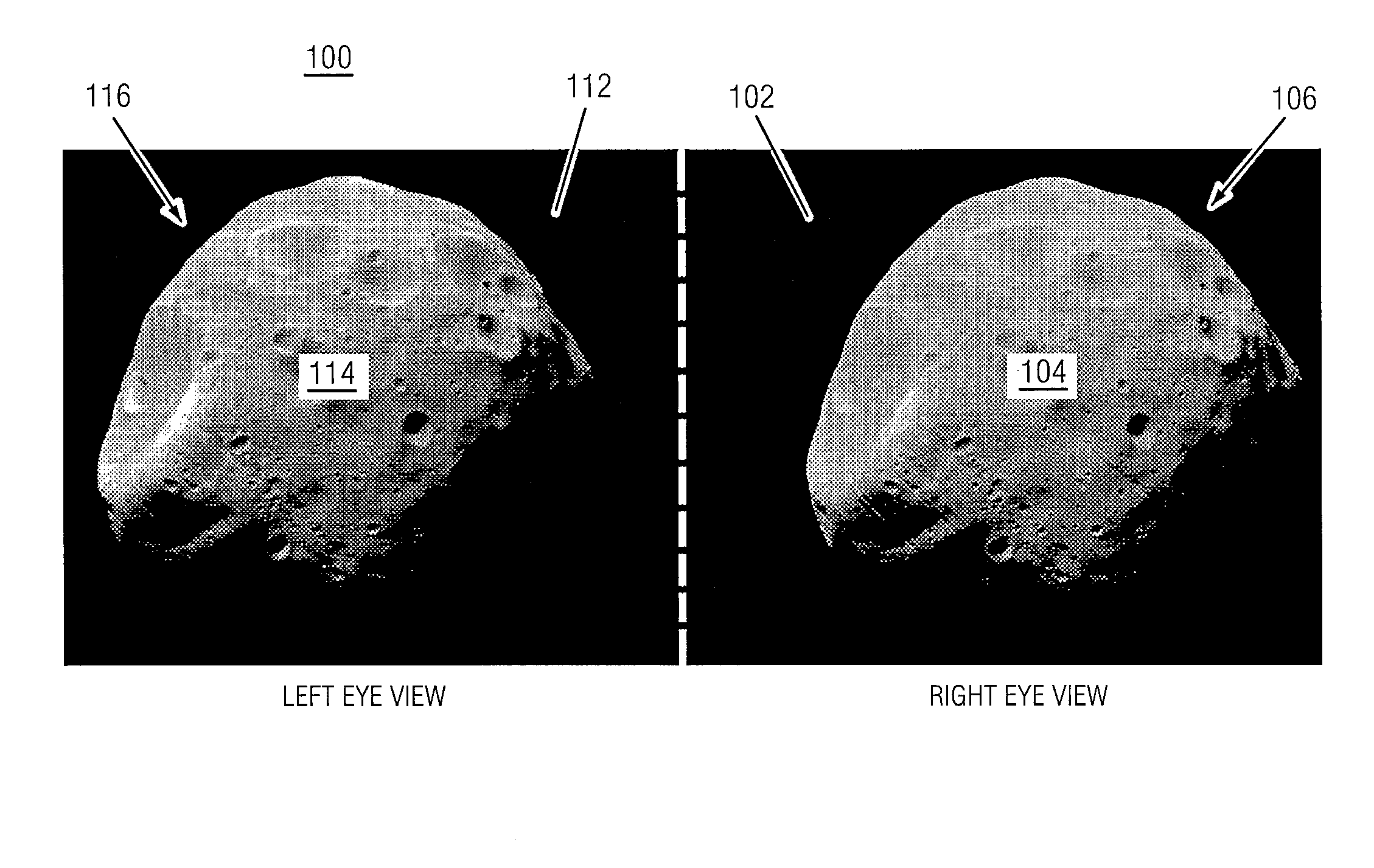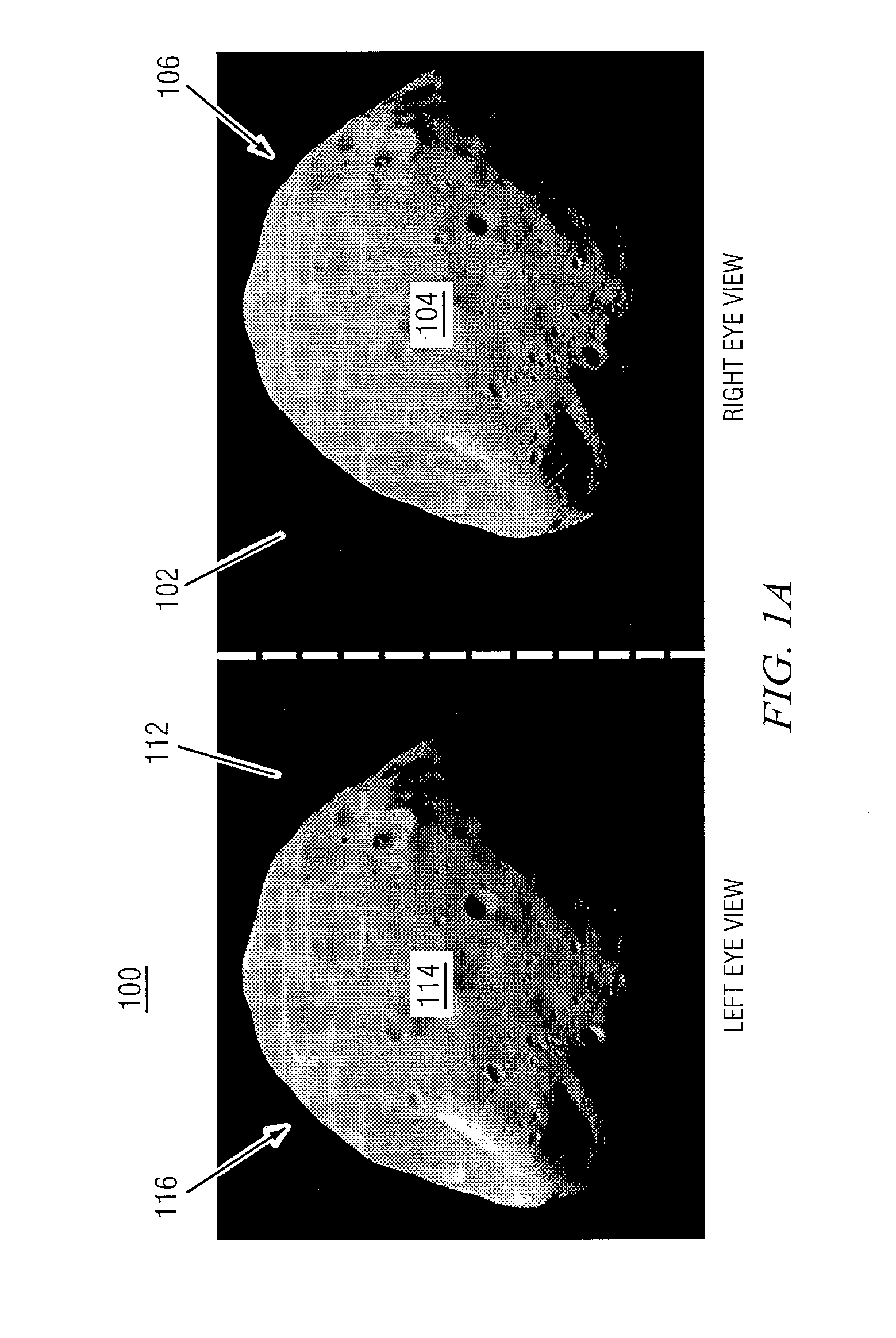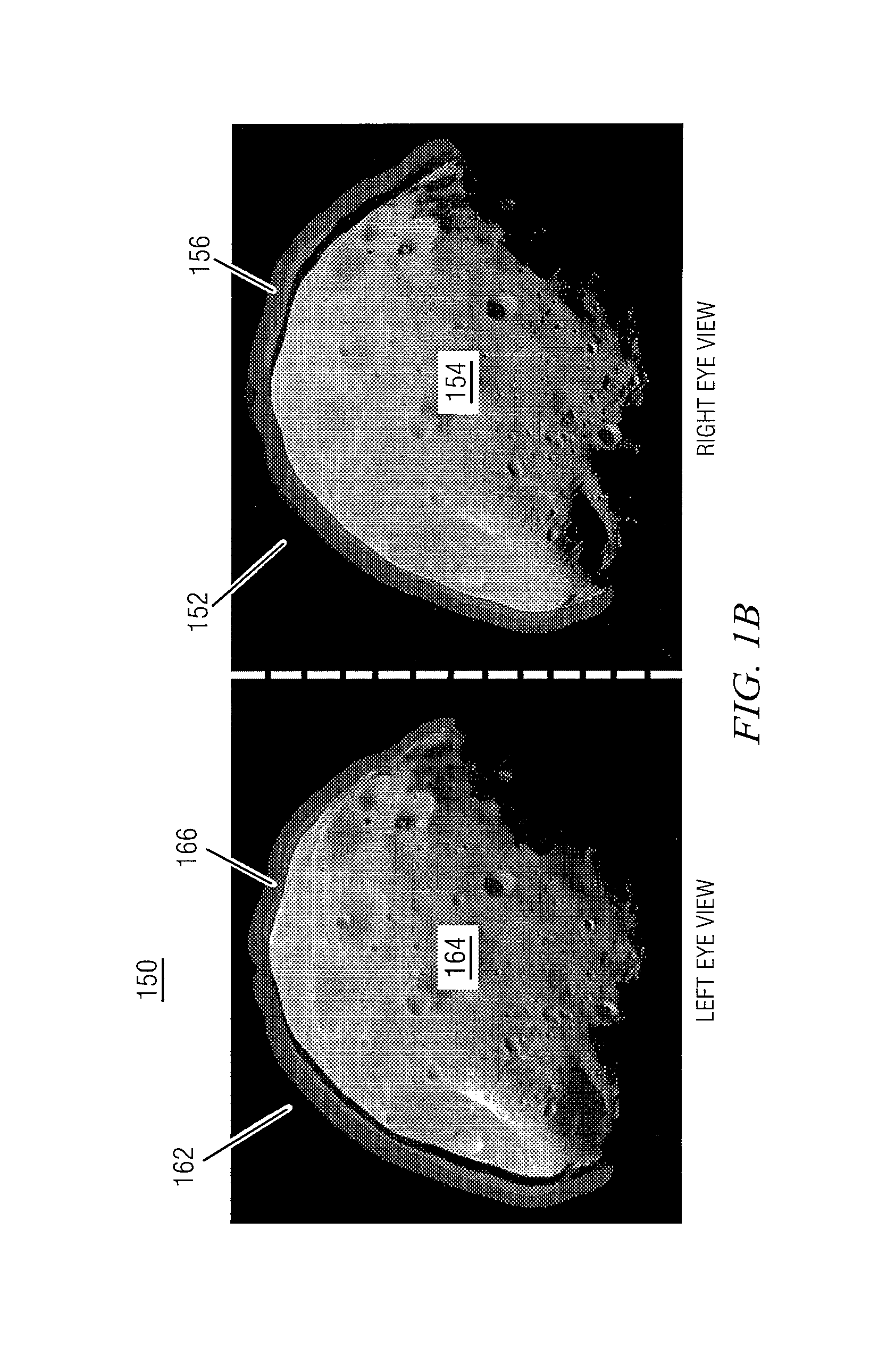Enhanced ghost compensation for stereoscopic imagery
a technology of stereoscopic imagery and ghost compensation, applied in the field of stereoscopic three-dimensional (3d) imagery, can solve the problem that the ghost compensation process has a low probability of success, and achieve the effect of disguising luminan
- Summary
- Abstract
- Description
- Claims
- Application Information
AI Technical Summary
Benefits of technology
Problems solved by technology
Method used
Image
Examples
Embodiment Construction
[0020]Ghost images are associated with relatively bright regions intended for one eye, that are co-located in viewing space with dark regions intended for the other eye. Therefore, a ghost image tends to increase the brightness of a substantially dark region in the image in which it appears. Ghosting may be caused by the leakage of the left eye image into the right eye and vice versa. The cause of this in a digital system may be the imager and the optical elements of the system through the lens, screen, and glasses. The perceptibility of a ghost image depends on a number of factors, including, but not limited to, channel contrast, disparity (left-right separation of the object), edge visibility, viewer engagement. The visibility of a ghost artifact has two effects. First, the ghost images are distracting as they can be directly seen. Second, the ghost images are disruptive to the formation of the 3D sensation and, thus, add to viewer fatigue.
[0021]A conventional ghost compensation p...
PUM
 Login to View More
Login to View More Abstract
Description
Claims
Application Information
 Login to View More
Login to View More - R&D
- Intellectual Property
- Life Sciences
- Materials
- Tech Scout
- Unparalleled Data Quality
- Higher Quality Content
- 60% Fewer Hallucinations
Browse by: Latest US Patents, China's latest patents, Technical Efficacy Thesaurus, Application Domain, Technology Topic, Popular Technical Reports.
© 2025 PatSnap. All rights reserved.Legal|Privacy policy|Modern Slavery Act Transparency Statement|Sitemap|About US| Contact US: help@patsnap.com



